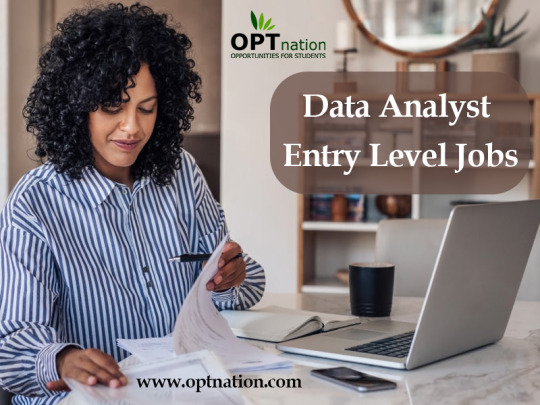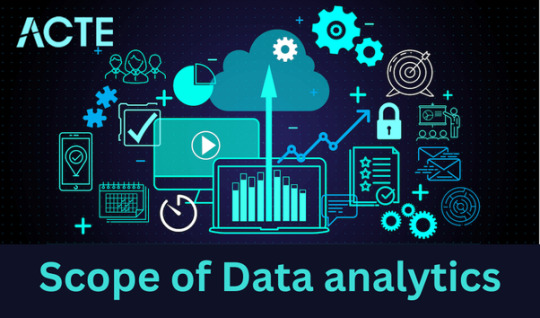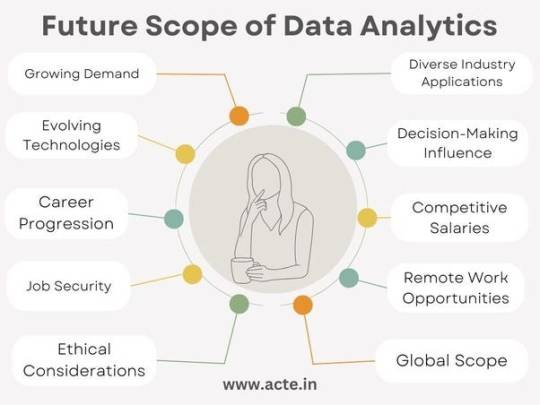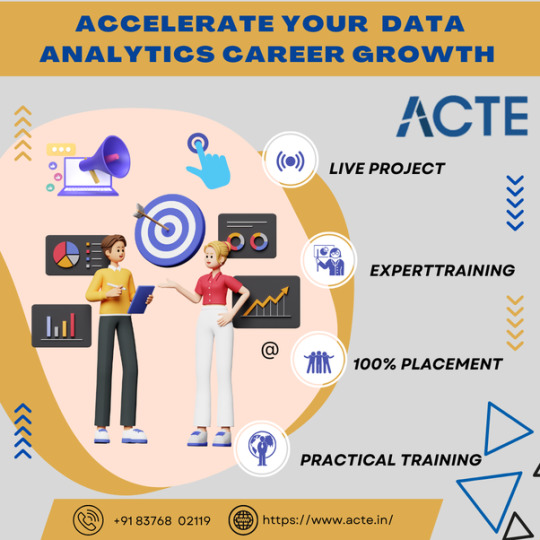#Data analyst jobs
Text
Top Data Science Courses With Certificate ⬇️
1-IBM Data Science Professional Certificate
https://imp.i384100.net/YgYndj
2-Google Data Analytics Professional Certificate
https://imp.i384100.net/x9jAxk
3-Google Data Analytics Professional Certificate
https://imp.i384100.net/x9jAxk
4-Introduction to Data Science Specialization
https://imp.i384100.net/Ryqyry
5-Applied Data Science with Python Specialization
https://imp.i384100.net/GjkEPn
6-Google Advanced Data Analytics Professional Certificate
https://imp.i384100.net/1r5E3B
7-What is Data Science?
https://imp.i384100.net/JzmRaN
8-Data Science Specialization
https://imp.i384100.net/BX9BmB
9-Python for Data Science, AI & Development
https://imp.i384100.net/g1ARWv
10-Foundations of Data Science
https://imp.i384100.net/nL2Wza
11-IBM Data Analyst Professional Certificate
https://imp.i384100.net/jWGKxa
12-Machine Learning Specialization
https://imp.i384100.net/k0gLAV

#courses#coursera#google#data analytics#jobs#dataanalytics#dataanalysis#data science#data analyst jobs#data analysis#datascientist#machine learning#free courses#courses with certification#online courses
14 notes
·
View notes
Text
With the rise of big data and analytics, the role of a data analyst has become increasingly important in India. Data analysts help organizations make sense of large amounts of data, identify patterns and trends, and derive insights to aid decision-making. This has made data analyst one of the hottest careers in the country today.
But is it really a good career option in India? Let's examine some of the key pros and cons of being a data analyst in India:
Pros:
Strong demand: With data influencing every aspect of business, there is great demand for qualified data analysts across sectors like IT, banking, retail, healthcare etc. This demand is likely to grow as data collection and analytics become even more critical.
High pay: Data analysts are well compensated in India, with average salaries ranging from ₹5-10 lakhs for entry level going up to ₹30 lakhs for experienced professionals. Salaries in metros can be even higher.
Cons:
Rapidly evolving field: New data tools and technologies are emerging rapidly. Data analysts need to constantly update their skills to stay relevant. Learning can be demanding.
Stressful deadlines: Data insights often need quick turnarounds. This can lead to stressful situations, overtime and tight deadlines.
For those looking to start a career in data analytics, platforms like Kochiva offer comprehensive online courses to help you learn in-demand data skills. Their industry-relevant curriculum, expert faculty, and virtual labs ensure you are job-ready from day one. I highly recommend checking out their data analyst certification course.
Overall, a career as a data analyst promises strong growth in India. With the right skills and continued upskilling, it can be an exciting and financially rewarding career for those with an analytical bent of mind.
6 notes
·
View notes
Text
Data Analyst Entry Level Jobs in USA
To begin your career in the right direction in an industry you must look for an entry level data analyst jobs. Data analysts work in a wide range of fields and industries. Data analysts are increasingly valuable in many other sectors as well as businesses and organisations. They take messy data and make it neat and organised. Then, they use computer tools to find interesting things in the data, like trends and patterns. They work with experienced analysts to learn and help the company make smart decisions using data.

2 notes
·
View notes
Text
Exploring the World of Data Analytics: Opportunities and Beyond

Describe data analytics.
Analyzing data to find useful information, patterns, and trends is known as data analytics. Businesses adore it since it aids in their improvement. It’s similar to solving problems with data.
Why is data analysis so crucial?
Consider yourself in possession of a treasure map (data) and the desire to locate the treasure (insights). Your compass is data analytics.
Why it matters is as follows:
It aids in your understanding of consumer behavior, market trends, and company performance.
Efficiency: You can discover areas in which your company may save both time and money.Smart decisions: When using data, you may base decisions on facts rather than educated guesswork.
Personalization: Have you ever seen how Netflix suggests shows? That is data analysis.

Future Scope of Data Analytics :
High Demand: Many businesses in different industries need data experts because they use data to make smart choices. So, the need for skilled data analysts is growing.
Various Job Fields: Data skills are useful everywhere, not just in one industry. You can work in finance, healthcare, e-commerce, marketing, or technology. This means you have many options for your career.
Tech Keeps Changing: The tools and methods for working with data keep getting better and different. It’s important to keep learning new things, but it also means you can become an expert in a special area.
Helping Decisions: Data people play a big role in helping businesses make important decisions. What you find in data can change how a company plans for the future.
Career Growth: Starting as a data analyst can lead to better and higher-paying jobs like data scientist or machine learning engineer.
Good Pay: Data analysts are paid well. As you get better at your job, you can earn even more.
Job Security: As long as companies use data, they’ll need people who understand it. So, you’ll have a stable job.
Work from Anywhere: You can often do data work from anywhere, giving you flexibility in where you live.
Ethical Data: Data privacy and being fair with data are important. People who can make sure data is used the right way are in demand.
Worldwide Opportunities: Data skills are needed all over the world, so you
can work in different countries if you want.
Careers in Data Analytics:
Data Analyst: The entry point They collect, clean, and analyze data.
Data Scientist: The Experts They use machine learning to solve complex puzzles.
Business Analyst: The bridge between data and business decisions
Big Data Engineer: They manage massive data sets using big data tools.
Healthcare Analyst: They use data to improve healthcare outcomes.
Marketing Analyst: Masters of measuring marketing success
Financial Analyst: They use data for financial strategies.
Sports Analyst: They play with data in the world of sports.
The Future of Data Analytics:
AI and machine learning: Think smarter, not harder. Automation will rule.
IoT Analytics: Connected devices will provide more data than ever.
Ethical Analytics: Data privacy will be a top concern.
Data Visualisation: Making data pretty and easy to understand will be big.

Feel free to get in touch with an ACTE institution if you want to learn more about Data Analytics because they provide certifications and possibilities for job placement. Teachers with experience can improve your learning. These services are available offline and online. Take things slowly and, if you’re interested, think about signing up for a course.
I hope I was able to effectively respond to your query. If it’s not, add it in the comments section. I still think I have a lot to learn.
Consider following me and giving this answer an upvote if you found it to be useful. This will motivate me to post more information on data analytics.
We appreciate you taking the time to read this and voting it up. Enjoy your day.
#data analytics#data analysis#data analytics course#data analyst jobs#data analyst training#data analyst certification#data analyst course
3 notes
·
View notes
Text
8 notes
·
View notes
Video
youtube
How to highlight Duplicate or Unique values in Excel!
2 notes
·
View notes
Text
How to Become a Data Analyst in 2022?-
In the past decade, data has become of prime importance. Organizations are investing heavily to ensure the maximum yield universalize of information from the firm’s database. The need for this extract has risen after the revolution in trade brought about by data analytics. Data Analytics has revolutionized the way the higher management or the owner of the business see’s the data. The insights gained post evaluation and analysis of data and showcasing the same in a visually appealing format or report have modified the approach to business and the campaigns that the firms run to push sales and improve the goodwill of the brand.
How to become a Data Analyst With No Experience?
Data Analytics is a path of untold possibilities and is expected to grow larger than ever before. Since the revolution of digitization of records has lowered the operating costs for companies. The digitized data is stored in huge data silos called databases either through an outsourced connection or through cloud servers whichever fits the need of the business or startup. Data Analytics helps in gaining insights that might be hidden inside the data.
The future of data analytics, in general, is democratization. We have come a long way from only the statisticians or only the number crunchers being able to work with data and then hand it over to the analysts. The term that has been buzzing around the conference rooms is self-service data analytics. Being able to answer the questions of our customers which they don’t even know makes it easily achievable by employing tools like Power BI & Tableau which make it accessible to anybody. These tools do a great job of integrating and implementing a lot of features that require no coding.
Real-time decision-making based on real-time data becomes possible by taking or utilizing some of these advanced data analytics tools which help the user to create a connection between artificial intelligence and machine learning. Data analytics enables the operators to take those complex problems/issues and break them down for business users to understand whilst keeping it simple. The way Power BI & Tableau can drive insights from any basic data set extracted from any database.
Everything around us is data and we just need ways to harness, understand, learn and make good choices based on data analytics. It is here to stay and the next big wave is how do we implement it so it stays forever and continues to expand.
A Step-by-Step Guide to Become a Data Analytic:-There are basic steps with which anyone can start a career as a Data Analyst: –
Get a bachelor’s degree in Math or Computer science with priority on statistical or analytical skills.
How to become a data analyst without a degree – The easiest way to do this is to master important data analytical skills.
opt for a certification course with Analytics Training Hub to start a data analyst learning path.
Get a job at an entry-level as a data analyst.
Earn a Master’s in Data Analytics.
What does a Data Analyst do?
The job profile of a data analyst entails multiple steps, starting from: –
Discover the problem or determine what the owner needs.
Do they need a dashboard, do they need reports, do they need to do some type of analysis on their product and give some type of recommendation?
When the analysts finally get the idea of what they need to do, they have to create a plan of action.
As to when will the user be getting this data and where is it coming from.
Often it can be the user’s job to communicate that to the team.
The next thing that the user would want to do is to collect the data.
Data can come from a ton of different sources so whether that is an SQL backup, a flat file, or an API.
After extraction, the analyst should be able to get all that data into one place.
Then as a user, you would need to work with your programmers to create an extract, transform and load (ETL) process.
So, the user is going to work with the programmer to get the data, and then both the user and the coder are going to create business rules to transform it for how the data analyst wants it to look in your system.
Then the operator loads the data and this can also be known as creating an ETL pipeline.
if you have data that’s going to be coming in either weekly or monthly the operator wouldn’t want to repeat this process manually every single time.
So, creating a pipeline is creating an automated process to bring that data, in the same way, every single time and that’s going to save you a lot of time.
The very last thing is aggregating your data which just means standardizing data and putting it all together instead of having it as separate sources.
the next step would be to clean the data Data is always messy.
Sometimes they use three different date formats, people’s names are capitalized for absolutely no reason and sometimes somebody forgets to add the customer id. So, you can’t map the patient in your system.
The analyst needs to do all this because it makes the data a lot more usable for later processes and part of this is normalizing and standardizing the data so that when you do your visualizations or your reports later all the data looks the same that can be used in any part that you need to be used in.
The next thing that the user needs to do is set up the data for reports and visualizations and oftentimes the user achieves this is by creating views.
A view allows the operator to combine several tables into one and then choose a subset of that. A data that the user wants to use for the reports and visualizations and each view may need to be formatted differently based on what the operator is going to be using it for in the report or the visualization.
Last and foremost is creating the reports and along with automation of that process so that if the owner wants it every week or every month it can just generate the report from a stored procedure or a job that automatically sends it out with the latest data every week or month.
The user can also connect that data to a data visualization tool like Tableau, power bi, python, or R.
What is the future Data Analyst job?
As per leading data connoisseurs of the data industry, the job profile of a data analyst seems to hold an extremely promising prospect in the next coming decade or two. The data Analyst job is a stepping stone and may lead to many of the below-mentioned job profiles depending on your interests: –
Data engineers:
data engineer would create the platform and the data structure within which all the data from the users would be captured for example what items they buy that is in their cart currently and what is on their wish list they have to make sure that the captured data is stored in such a fashion that is not only well-organized but it’s also easily retrievable. They should be comfortable working with every data source and employ ETL queries to collate data from multiple data sources and then organize all of this data in data warehouses or databases so that colleagues in the company can make the best use of it. To become a data engineer you need to acquire knowledge of languages such as Python, Java, SQL, Hadoop, Spark, Ruby, and C++. Now all of these are not mandatory but they vary from company to company for the job profile of a data engineer.
Business Analysts:
Business analysts are expected to draw insights from the data which would directly impact business decisions. Business analysts are directly involved in day-to-day business activities and there are a lot of ad hoc analyses that business analyst is expected to do, for example in an e-commerce company a business analyst would help the marketing team identify the customer segments that require marketing or the best time to market a certain product or why the last marketing campaign failed and what to do in future to prevent such mistakes hence for a business analyst a good understanding of business data and statistics is essential.
The tools and languages that would be most commonly used by you as a business analyst would be Excel, SQL, power bi, and tableau. Job profile of a business analyst may also be known as a data visualizer or a business intelligence professional who’s are responsible for creating weekly dashboards to inform the management about weekly sales of different products, the average delivery time, or the number of daily cancellations of orders, etc.
Data scientists:
A data scientist is a rare gem that employs data that has been existing in the organization to design business-oriented machine learning models. As a starting point, a data scientist can go through the available data of the company to look at various buying patterns identify similar items on the website, and then create algorithms around the same so that the website can automatically endorse products to the users based on the navigation history purchase of the consumer. Now this solution has to be effective enough that it can predict future purchases in real-time for visitors of the website.
Data analysts are expected to perform a lot of unplanned analyses which can facilitate decision-making within an organization. Data scientists on the other hand not only perform ad hoc analysis and create prototypes but also create data products that make intelligent decisions by themselves and this is where machine learning becomes extremely critical. For example, the suggestion you get after you buy a particular item or based on the items that you have on your wish list are because of machine learning models built by a data scientist.
The requisite skill for a data scientist is knowledge of algorithms, statistics, mathematics, machine learning, and programming languages such as Python, C, etc. They should also have an understanding of trade and the aptitude to frame the right questions to ask and find the answers from the available data. Finally, a data scientist should be able to communicate the outcomes efficiently to the team members and all the involved stakeholders.
Salary of a Data Analyst:
The salary for a Data Analyst may differ in different organizations. But, a Senior Data Analyst with the right skill and software knowledge may command a high price for the services offered.
The average salary for an entry-level Data Analyst may start from INR 2.9 lakhs per annum.
The average salary for a mid-level Data Analyst may start from INR 4.5 lakhs per annum.
The average salary for a Senior level Data Analyst may start from INR 9.5 lakhs per annum.
Some useful links are Below:
To Know more about Data Analyst visit - Analyticstraininghub.com
To Know more about our Data Analyst Certification courses visit - Analyticstraininghub.com
Must visit our official youtube channel - Analyticstraininghub.com
#data analyst course#data analysis#datavisualization#datamanagement#data analyst jobs#data analytics course in delhi
8 notes
·
View notes
Text
Advanced-Data Science Full Stack Master's Program "Become a job-ready data science specialist in less than 3 months"

At Brainalyst, we use a bottom-up methodology to assist Businesses and Individuals in mastering the discipline of data science. We begin by comprehending and utilising the fundamental technological frameworks employed in big data analysis.
1 note
·
View note
Text
Data Analytics: Your Competitive Edge in a Digital World

Data Analytics: Your Competitive Edge in a Digital World
The present era is the digital era and in this digital era, data is very important and precious. Every organization in every industry and every business is in a race to use it. They want understanding, better decisions and to get ahead of the competition. Online relations, social media and smart devices create huge data. This presents both opportunities and challenges. In today's complicated world, we must use data analytics. It transforms raw data into insights. These understandings drive decisions and drive innovation.
Why Data Matters in the Digital Age
Data is everywhere. Every click, social media post, and online interaction creates a wealth of information. This "big data" can be overwhelming. But, it holds the key to understanding customers, optimizing operations, and predicting trends. In a rapidly changing world, the ability to analyze and act on data in real-time is crucial, not just for staying competitive but for survival.
Data-driven companies can anticipate market shifts. They understand customer needs and can quickly respond to changes. This agility can make the difference between leading the market and struggling to keep up.
What is Data Analytics?
Data analytics is the process of examining large datasets. It aims to uncover hidden patterns, relationships, and insights. It ranges from basic stats to complex machine learning. All aim to turn raw data into useful information for decision-making.
There are different types of data analytics, each serving a unique purpose:
Descriptive Analytics: Answers the question, "What happened?" by summarizing historical data. It helps identify trends and patterns that can inform future strategies.
Diagnostic Analytics: Digs deeper to answer, "Why did it happen?" by identifying the underlying causes of past events.
Predictive Analytics: It uses past data to predict future outcomes. It helps businesses make proactive decisions.
Prescriptive Analytics: The most advanced form. It predicts what will happen and recommends actions to take advantage of these predictions.
How Data Analytics Gives You a Competitive Edge
Improving Customer Experience
Data analytics helps businesses improve the customer experience. It does this by understanding customers' preferences, behaviors, and pain points. This leads to personalized marketing, better products, and more targeted customer experiences. E-commerce sites like Amazon use data to recommend products. They base this on users' browsing and purchase history. This boosts customer satisfaction and loyalty.
Optimizing Operations
Businesses can also use data analytics to streamline operations. By analyzing supply chain, inventory, and production data, companies can find inefficiencies. This can lead to cost savings and better resource use. Manufacturers can use predictive analytics to forecast demand. This helps them avoid overproduction or stockouts.
Enhancing Decision-Making
In a world where information is constantly changing, making data-driven decisions is essential. Data analytics gives insights for quick, informed decisions. It helps with choosing a new market, setting product prices, and evaluating a marketing campaign. Data-driven companies are better at navigating uncertainty. They make strategic decisions that drive growth.
Identifying New Opportunities
Data analytics can help businesses find growth opportunities. It does this by analyzing market trends, customer feedback, and competitor data. This can lead to the development of new products, entry into new markets, or the creation of innovative business models. For example, Netflix uses data to find viewer trends. It then creates content that resonates with its audience.
Enhancing Risk Management
Every business faces risks. Data analytics can help. It can spot threats early. By analyzing data on market trends and finances, companies can address risks before they escalate. For example, banks use predictive analytics to assess lending risks. This reduces defaults.
The Technology Behind Data Analytics
The rise of data analytics has been powered by advances in technology. Key technologies driving this revolution include:
Artificial Intelligence and Machine Learning
AI and machine learning are at the forefront of data analytics. They enable businesses to quickly and accurately analyze large datasets. Machine learning algorithms build predictive models. They forecast future outcomes. This helps businesses make better predictions and take action.
Big Data Technologies
We need powerful tools, like Hadoop and Spark, to manage and analyze today's vast data. Big data technologies let us process and analyze large datasets in real-time. This lets businesses gain insights otherwise unmanageable.
Cloud Computing
Cloud computing has changed data storage and analysis. It gives businesses access to vast computing power and storage. They no longer need costly on-site infrastructure. This makes data analytics more accessible and scalable for businesses of all sizes.
Data Visualization Tools
Visualizing data is crucial for understanding and communicating insights. Tools like Tableau, Power BI, and Google Data Studio help businesses. They create interactive dashboards and reports. These make it easier to interpret data and make decisions.
Challenges in Implementing Data Analytics
Despite its benefits, implementing data analytics comes with challenges:
Data Quality and Integration
Data must be accurate, complete, and consistent. Poor quality can lead to bad decisions. Integrating data from multiple sources can be complex. This is especially true with different formats and systems.
Skills and Expertise
Data analytics needs specialized skills. These include knowledge of statistics, data management, and machine learning. But, a shortage of skilled workers makes it hard for businesses to find talent to implement their analytics strategies.
Data Privacy and Security
With rising concerns about data privacy, businesses must protect customer data. They must also comply with regulations. This requires robust security measures and staying up-to-date with data protection laws.
Cultural Resistance
One of the biggest hurdles is cultural resistance within organizations. Employees may resist data-driven methods. They may prefer using their intuition to make decisions. To overcome this resistance, we must foster a data-driven culture. It should encourage using analytics in decision-making.
The Future of Data Analytics
Looking ahead, several trends are likely to shape the future of data analytics:
Increased Automation
Automation will play a bigger role in data analytics, with AI and machine learning taking on more complex tasks. This will allow businesses to automate routine processes and focus on more strategic activities.
Real-Time Analytics
The demand for real-time insights will continue to grow, driving the adoption of real-time analytics solutions. Businesses will increasingly rely on real-time data to make immediate decisions, gaining a competitive edge in fast-paced markets.
Augmented Analytics
Augmented analytics, which combines AI and machine learning with traditional analytics, will become more widespread. This approach makes data analytics more accessible to non-experts, democratizing insights across organizations.
Data Democratization
As data analytics tools become more user-friendly, more employees will have access to them, enabling data-driven decision-making at all levels.
Enhanced Data Privacy and Ethics
As data analytics becomes more pervasive, concerns about data privacy and ethics will intensify. Companies will need to balance the benefits of data analytics with the responsibility to protect individual privacy and ensure ethical use of data.
Integration of AI with IoT
The combination of AI and the Internet of Things (IoT) will unlock new opportunities, such as predictive maintenance in manufacturing and personalized healthcare.
Expansion of Data-as-a-Service (DaaS)
The Data-as-a-Service model will grow. It will let businesses access and use data on-demand, without building large infrastructures.
Greater Focus on Explain ability and Transparency
As AI models grow more complex, the demand for explainability and transparency in analytics will rise, especially in regulated industries.
Conclusion
In today’s digital world, data analytics is not just a competitive advantage—it’s a necessity. By turning raw data into insights, businesses can improve customer experiences. They can also optimize operations, make better decisions, and find new growth opportunities. To fully harness data analytics, businesses must overcome challenges. These include issues with data quality, skills shortages, privacy concerns, and cultural resistance.
As technology continues to evolve, the role of data analytics will only grow. Businesses that invest in data analytics now will thrive in tomorrow's digital, competitive world.
#data analytics#big data analytics#data analysis#data analyst course#data analyst training#data analyst jobs#habilelabs#ethicsfirst
0 notes
Text
0 notes
Text
#jobs#jobsearch#online jobs#recruitment#data analyst jobs#data analyst course#data analyst training#data analyst certification#data analyst interview questions
0 notes
Text
Data Analyst Course at VK Academy, Bangalore
Overview: VK Academy in Bangalore offers a comprehensive Data Analyst course designed to equip students with the essential skills and knowledge required to excel in the field of data analytics. The course is tailored to meet the increasing demand for data-driven insights across various industries.
Key Features of the Course:
Curriculum:
The curriculum covers a wide range of topics essential for data analysis, including data collection, cleaning, and preprocessing, statistical analysis, data visualization, machine learning basics, and predictive analytics.
Tools and technologies such as Python, R programming, SQL databases, Excel, Tableau, and Power BI are extensively taught to ensure proficiency in data manipulation and visualization.
Hands-on Learning:
Emphasis is placed on practical learning through hands-on projects, case studies, and industry-relevant assignments.
Students work on real-world datasets and scenarios, enabling them to apply theoretical knowledge to practical problems.
Capstone Projects:
The course includes capstone projects that allow students to work on complex data analytics projects independently or in teams.
These projects are designed to simulate real industry challenges and provide students with valuable experience in solving practical data problems.
Expert Faculty:
Classes are taught by experienced faculty members who bring extensive industry knowledge and practical insights into the classroom.
Faculty members guide students through the intricacies of data analysis tools and methodologies, ensuring a deep understanding of the subject matter.
Career Support:
VK Academy provides robust career support services, including resume building workshops, interview preparation sessions, and networking opportunities with industry professionals.
The academy's placement cell assists students in securing internships and job placements with leading companies in Bangalore's thriving tech sector.
Prerequisites and Eligibility:
The course is open to graduates from any discipline with a strong interest in data analytics.
Basic knowledge of programming (Python or R) and statistics is recommended but not mandatory, as foundational concepts are covered in the course.
Facilities at VK Academy:
Modern Infrastructure:
VK Academy boasts state-of-the-art classrooms and computer labs equipped with the latest technology and software tools required for data analysis.
Library and Resources:
The academy's library offers a comprehensive collection of books, journals, and online resources related to data analytics, providing students with additional study materials and research support.
Collaborative Learning Environment:
VK Academy promotes a collaborative learning environment with opportunities for group discussions, peer-to-peer learning, and teamwork on projects.
Industry Connections:
The academy maintains strong ties with industry leaders and organizations, facilitating guest lectures, workshops, and industry visits to enhance students' industry exposure and networking opportunities.

0 notes
Text
Remote Data Analyst Jobs: Salary & Employment Guide
Explore remote data analyst jobs, salary expectations, and employment trends. Find the best remote opportunities.
#remote data analyst jobs#salary#employment#data science for beginners#data analyst jobs#data science#pickl.ai#data analyst
0 notes